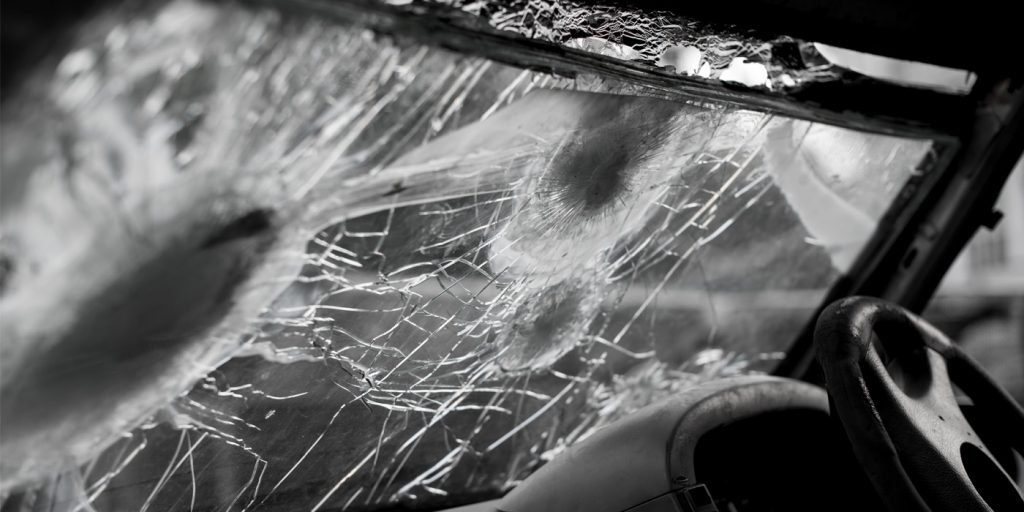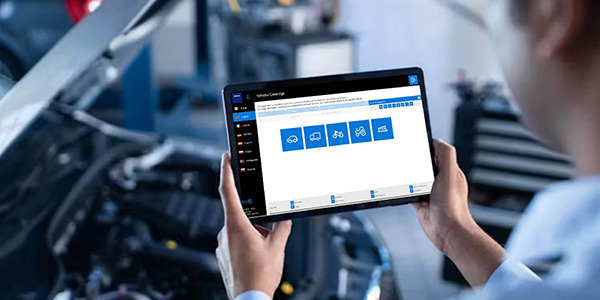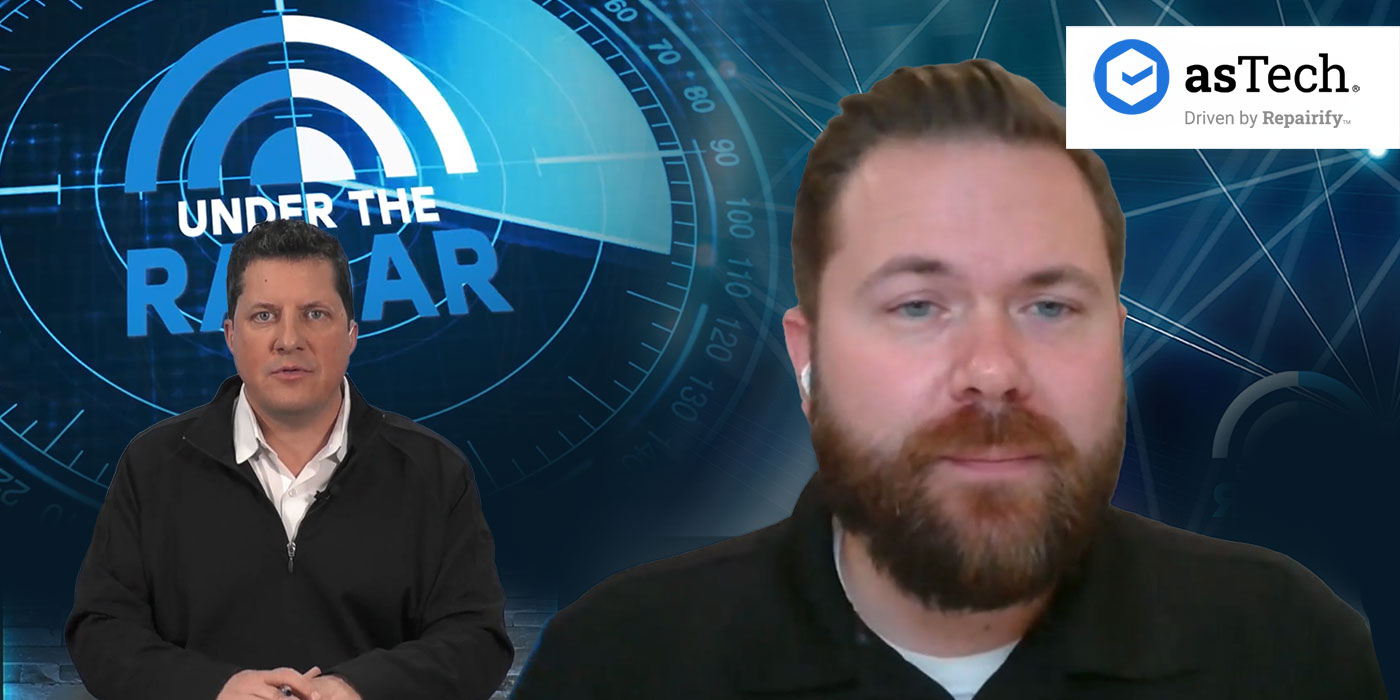The recent and rapid changes in vehicles have impacted all aspects of automotive repair. The electronic avalanche of new sensors, cameras and control modules has everyone rethinking how they operate. Auto glass is no exception.
Tipping Over Mobile Auto Glass
Advanced driver-assistance system (ADAS) recalibration requirements for any R&I and replacement of windshields has tipped over the mobile auto glass industry. Replacing a windshield and not recalibrating the camera for ADAS is a liability I would not risk in any way.
The procedures required to recalibrate the cameras may not allow for a mobile application. For a static recalibration using targets, the requirements of having a level surface, lighting, certain backgrounds for targets along with others make the possibility of doing a recalibration in a parking lot extremely unlikely if at all possible. Liability-wise, a static recalibration in a parking lot would be a definite “no.”
These stringent recalibration requirements are forcing glass companies to change their business model that has been the norm for years. Glass technicians replacing ADAS-equipped vehicles’ windshields that require static recalibrations will require a controlled environment. What does this mean to body shops? Opportunity.
According to glass manufacturing sources, an average of 14 million windshields are replaced annually in the U.S. In the past, most of these windshield replacements were handled by glass companies o ffering mobile service to someone’s workplace or home. Other services such as tempered glass replacement due to vandalism and back glass replacement from dad driving or pushing a lawnmower over rocks adds to the 14 million pieces of glass each year.
A continually growing trend is many windshields and tempered glass replacements being done by auto body shops versus auto glass companies. Adding glass replacement to your list of services is proving to be a valuable offering.
Protecting Your Customer and Your Family
I am going take a stance on auto glass replacement in order to protect you from liability: windshield replacement should only be done by technicians who are properly trained and certified by the Auto Glass Safety Council (AGSC) to the AGRSS standard.
The AGRSS standard is an ANSI standard established by the auto glass industry to promote correct installation of windshields to protect drivers and their families. Deaths and injuries due to improper windshield installations raised an alarm in the auto glass industry. Because of this awareness, the auto glass industry banded together to protect consumers. Whether you install your own glass or sublet to a glass company, make sure to reduce your liability by using only AGSC-certified technicians. Your customers and your families deserve to be safe.
If you do or plan to do any adhesive glass installation, the technician should be certified by the adhesive manufacturer. The training is offered directly by adhesive manufacturers and is a critical part of the repair process. More information about AGRSS and training for auto glass can be found at AGSC.org.
Glass Replacement Today
Auto body repair shops have always been removing and replacing glass in a variety of ways, depending on their level of experience or training and willingness to actually deal with the issue of glass. In cases of mechanically fastened glass such as door glasses, shops have performed these glass R&I and replacements internally. When adhesive-bonded glass is involved, there is a different attitude. A shop has the following choices when it comes to adhesive-bonded glass:
- Train and learn how to R&I and replace glass
- Sublet to a glass company
- R&I its own glass but leave windshields to the glass company
No matter what your choice, know that electronic safety features have changed the process for windshield installation and some mechanical operations.
All auto body repair operations have changed with the new electronics in today’s vehicles. Scanning, programming, diagnostic scanning and post-repair scans have all added new procedures necessary to complete repairs correctly. Even the final test drive after repairs are completed has changed and become more technical. For those still resisting the change and not following vehicle manufacturer requirements on electronic procedures, you are taking on major liability for you and your employees.
These changes have forced shops to look at equipment and/or companies that can complete these electronic procedures. Many shops have found that acquiring all the equipment needed to do all the procedures can be expensive. Getting a return on your investment looks challenging, to say the least. This is where the addition of auto glass replacement may be beneficial.
The Future of Glass Replacement
When a windshield is R&I’d or replaced in a vehicle equipped with ADAS, there are three things that may be required:
- Static recalibration – The use of targets in a controlled environment to aim cameras and sensors.
- Dynamic recalibration – A recalibration done while driving and meeting specific parameters.
- Both static and dynamic – The process of doing a static followed by a dynamic recalibration.
These procedures must be followed any time the camera is removed from the glass or if the glass, which is a focal “lens,” is removed or replaced – regardless of whether or not you did not unplug or bump the cameras. Stickers on replacement windshields and even instructions in owner’s manuals state that recalibration must be done prior to driving the vehicle.
I have seen so much confusion and misinformation on this issue. Dealers not knowing procedures or lacking the equipment necessary to perform recalibrations have confused the repair industry and public. Note that if the system is not properly “aimed,” there will be no red light on the dash or warning of any kind. The system cannot tell it is out of focus.
With recalibration requirements, especially the need for static recalibrations, the glass industry is currently undergoing a major restructuring of how services are o ffered. Mobile installations have been reevaluated as they are becoming challenging, if not obsolete. Currently, the percentages of windshields requiring recalibration is fairly low. As the number of vehicles equipped with ADAS and cameras mounted to the windshield increases, the number of windshields that will require recalibration will increase exponentially and fast. By 2022, it is possible that one in four windshields replaced will require recalibration. That number will only increase. Remember, an average of 14 million windshields per year are replaced. Do you think dealers will keep up? Many of you wait three days for service at dealers now.
Benefits of Change
Many shops that are thinking of buying equipment for all of the new procedures may want to look a little further and see what windshield replacement can add to their revenue.
How many times has a windshield left your shop with a crack and no one bothered to offer the customer the option to replace? The possibility of generating more income to your shop is obvious. I also want to add for shops that currently sublet out glass operations that having trained technicians can also benefit cycle time from the standpoint of not having to wait for the glass tech. The return on investment on this equipment will take time, but the added benefits of helping current or new customers makes doing your own glass work very appealing.
For those not wanting to invest in the scan tools and targets, it can still work in your favor. Many companies offer mobile service to your shop as long as you have all the requirements needed to do the job correctly – space, level floor, proper lighting, controlled environment, etc. Many glass companies have been doing mobile repair for years and will still do this on vehicles where mobile repair is still possible. The advantage of having brick-and-mortar makes the addition of glass service much easier. Having a building with the proper conditions is an advantage over the current mobile model of windshield replacement. So the benefits are still there even though you’re not buying scanning equipment and targets.
Things to Consider
First, if you decide to look into adding glass replacement to your shop, I want you to do some homework. Take a look at your market area and assess where there may be opportunity. It could also be beneficial to partner with a glass company in your region if you do not want to compete – you’ll still benefit by meeting new customers.
You can’t just go out and literally throw a glass in. This is particularly true of windshields. There have been lawsuits filed due to injuries and deaths from improperly installed windshields. The windshield has Federal Motor Vehicle Safety Standards or FMVSS applied to its installation and performance. The windshield is a structural component of the vehicle as well as a restraint that works with seat belts and airbags. Following proper procedures when using adhesives and primers is more critical than most people understand. This is not where a lecture or a web-based class on a computer will give you all you need to know. The same goes for certification on the use of adhesive.
I will give a lot of credit to Equalizer Tools of Texas. Gilbert Gutierrez and his crew have developed a hands-on course to train technicians in the safe and proper use of tools as well as proper auto glass installation procedures. Equalizer is the dominant producer and wholesaler of tools used in the auto glass industry. Their Auto Glass Academy offers hands-on training to technicians and will teach them all they need to know to begin a career in auto glass service. From removal to installation to recalibration, a technician graduating from this five-day course will be extremely well-educated on what is needed to repair or replace glass correctly.
Hands-on training such as the kind Equalizer o ffers is truly needed more in the repair industry. Now let’s add adhesive certification. Contacting your local urethane adhesive distributor will offer the added training of what kind of urethane adhesives to use and how to use them. Training is usually done on site at the shop, and I encourage everyone in the shop to take the training. This will give everybody the background on what is needed to perform windshield replacement as well as any other glass correctly.
Once you have completed these courses, you have the option of joining AGSC, which I encourage you to look into. You should know, however, that if you join, you will be audited. A person will come to your shop and observe an installation and verify shop documentation. You may feel this is over the top, but it’s a critical step to validate that your technicians are qualified and are protecting your business. More importantly, you’ll have the confidence that your customers are safe when they drive away. It’s not much different than being sure all your technicians pass their welding tests.
Summary
If all this training and equipment is still something you do not want to dive into, you could be a facilitator of the services. Glass companies need the controlled environment that static recalibrations require. They also need a place for some aspects specific to a dynamic recalibration – a place to bring a vehicle as well as an established roadway. Add to this a company that will do the recalibration at your shop and the variables of purchasing the glass and there are plenty of benefits to you if done correctly.
With the change in the business model currently being used by the auto glass industry, I see more advantages to body shops adding or actively marketing glass service if they’re not already doing so. Every customer you touch is a potential new customer for collision. As the number of windshields that require recalibration increases, do not count out how much of an advantage you have over a mobile glass technician.
Mitch Becker has been a collision industry trainer for 30 years. He can be reached at (612) 865-6229 or mb227701@ gmail.com.














